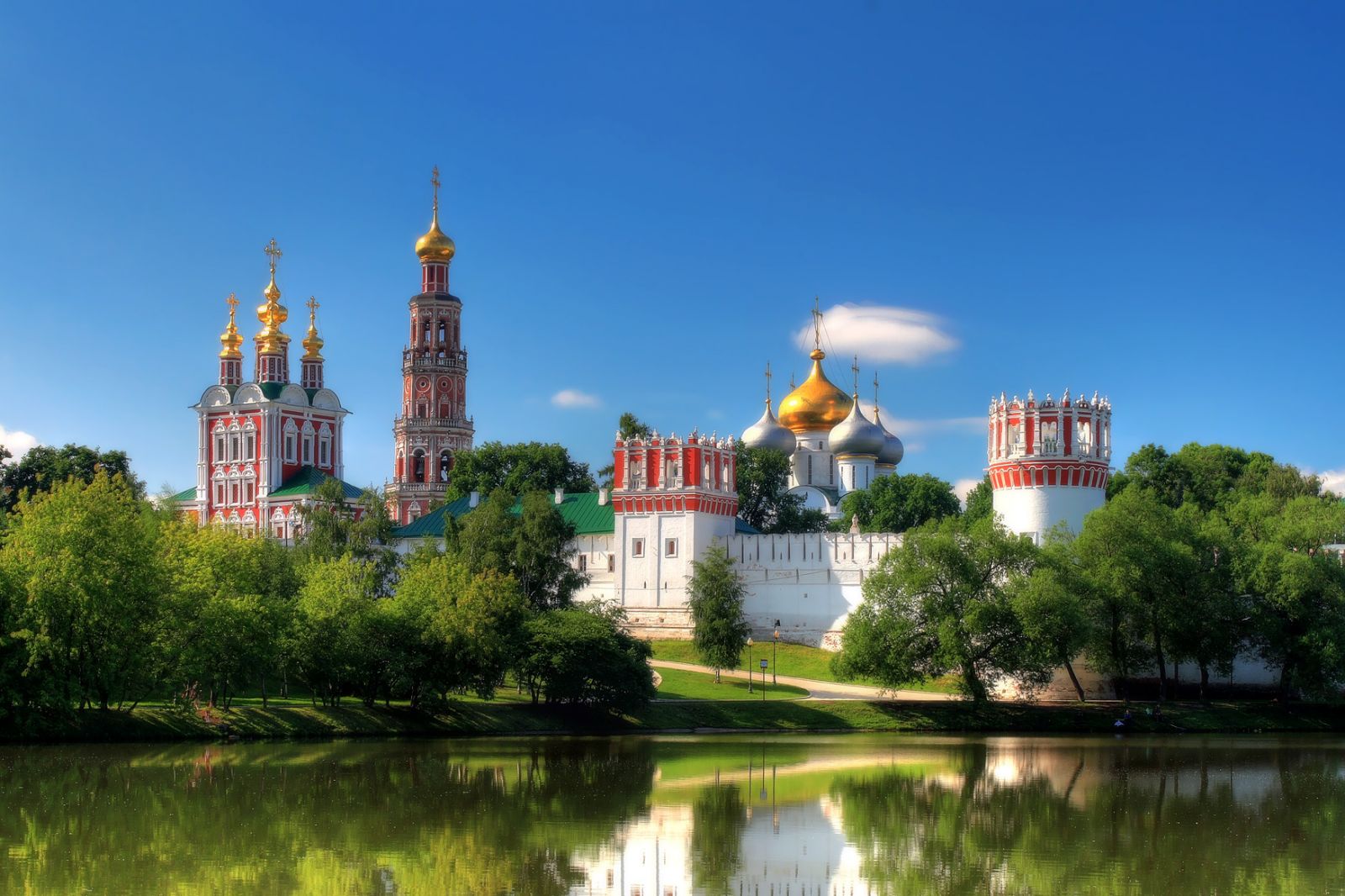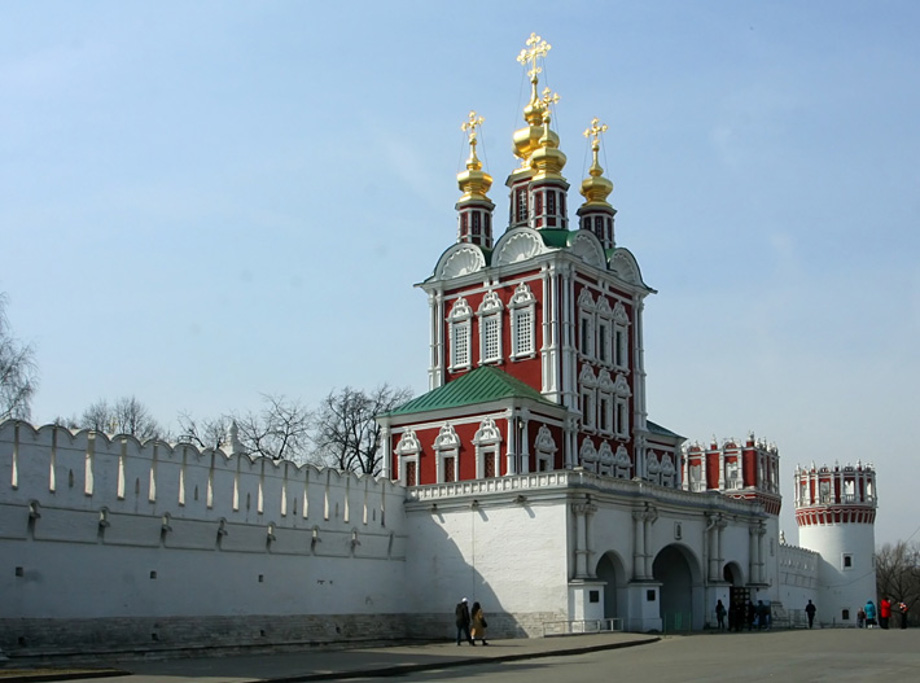Novodevichy Convent, also known as Bogoroditse-Smolensky Monastery (Russian: Новоде́вичий монасты́рь, Богоро́дице-Смоле́нский монасты́рь), is probably the best-known cloister of Moscow. Its name, sometimes translated as the New Maidens' Monastery, was devised to differ from an ancient maidens' convent within the Moscow Kremlin. Unlike other Moscow cloisters, it has remained virtually intact since the 17th century. In 2004, it was proclaimed a UNESCO World Heritage Site.
The Convent is situated in the south-western part of the historic town of Moscow. The Convent territory is enclosed within walls and surrounded by a park, which forms the buffer zone. The park is limited by the urban fabric of the city on the north and east sides. On the west side, it is limited by the Moscow River, and on the south side there is an urban freeway. The buildings are surrounded by a high masonry wall with 12 towers. The entrances are from the north (town side) and the south. The layout of the convent territory is an irregular rectangle stretching from the west to east.
The oldest structure in the convent is the six-pillared five-domed Smolensky Cathedral, dedicated to the icon Our Lady of Smolensk. It is situated in the centre of the axes between the two entrance gates. Extant documents date its construction to 1524–1525; yet its lofty ground floor, magisterial proportions, and projecting central gable are typical of monastery cathedrals built at the behest of Ivan the Terrible. Most scholars agree that the cathedral was rebuilt in the 1550s or 1560s. It was formerly ringed by four smaller chapels, in an arrangement reminiscent of the Annunciation Cathedral in the Kremlin. Its frescos are among the finest in Moscow.
The cathedral may be a focal point of the convent, but there are many other churches. Most date from the 1680s, when the convent was thoroughly renovated at the behest of the regent Sofia Alexeyevna (who, ironically, would be incarcerated there later). The blood-red walls and crown-towers, two lofty over-the-gates churches, a refectory, and residential quarters were all designed in the Muscovite Baroque style, supposedly by a certain Peter Potapov. In the old cathedral, a new bowl for holy water and gilded carved iconostasis were installed in 1685. Its four tiers contain 16th-century icons endowed by Boris Godunov; the fifth tier displays icons by leading 17th-century painters, Simeon Ushakov and Fyodor Zubov.
An arresting slender belltower, also commissioned by tsarevna Sofia, was built in six tiers to a height of 72 metres (236 ft), making it the tallest structure in 18th-century Moscow (after the Ivan the Great Bell Tower in the Kremlin). This light octagonal column seems to unite all major elements of the ensemble into one harmonious whole.
Vasili III, the Grand Prince of Moscow, founded the Novodevichy Convent in 1524 in commemoration of his conquest of Smolensk in 1514. The structure began as a fortress at a curve of the Moskva River three versts to the south-west of the Moscow Kremlin. It became an important part of the southern defensive belt of Moscow, which had already included a number of other monasteries. Upon its founding, the Novodevichy Convent was granted 3,000 rubles and the villages of Akhabinevo and Troparevo. Vasili's son, tsar Ivan the Terrible (reigned 1533–1584), would later grant a number of other villages to the convent.
The Novodevichy Convent housed many ladies from the Russian royal families and boyar clans who had been forced to take the veil, such as Feodor I's wife Irina Godunova (in residence 1598–1603; she was there with her brother Boris Godunov until he became a ruler himself), Sofia Alekseyevna (Peter the Great's half-sister; in residence 1689–1704), Eudoxia Lopukhina (Peter the Great's first wife, in residence 1727–1731), and others. In 1610–1611 a Polish unit under the command of Aleksander Gosiewski captured the Novodevichy Convent. Once Russian forces had retaken the convent, tsar Michael Fyodorovich supplied it with permanent guards (100 Streltsy in 1616, 350 soldiers in 1618). By the end of the 17th century, the Novodevichy Convent possessed 36 villages (164,215 desyatinas of land) in 27 uyezds of Russia. In 1744, it owned 14,489 peasants.












